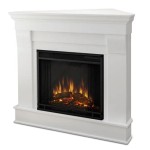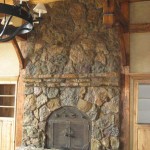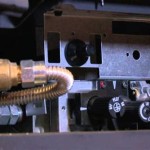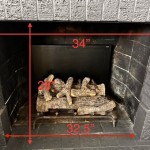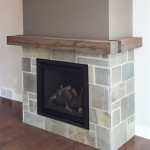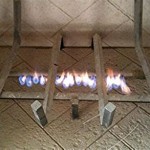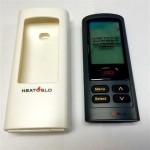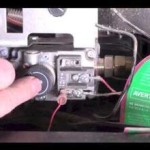Understanding FMI Fireplace Parts: A Comprehensive Guide
FMI, standing for Fireplace Manufacturers Inc., is a company known for producing a wide array of fireplaces and related components. Identifying and understanding the specific fireplace parts relevant to an FMI system is crucial for maintenance, repair, and ensuring optimal performance and safety. This article provides a detailed overview of commonly encountered FMI fireplace parts, their functions, and considerations for their replacement or repair.
The range of FMI fireplaces includes both gas and wood-burning models, each with its own unique set of parts and maintenance requirements. The specific parts needed will depend on the model of the fireplace, its age, and the frequency of use. Therefore, proper identification of the fireplace model number is the first and most important step in the process of finding replacement parts.
Identifying Your FMI Fireplace Model
Before attempting to replace or repair any parts, accurately identifying the model number of the FMI fireplace is paramount. This information is typically located on a metal nameplate affixed to the fireplace unit. Common locations for this plate include: inside the firebox, near the control panel (for gas fireplaces), or behind the decorative trim. The model number is usually a combination of letters and numbers, and this unique identifier allows for access to specific parts diagrams and manuals provided by FMI or authorized distributors. Knowing the serial number can further refine searches and ensure the correct components are being sourced. Consulting the original installation manual, if available, can also provide this crucial information.
Without a proper model number, it is exceedingly difficult to ensure compatibility between replacement parts and the existing fireplace system. Attempting to use parts designed for a different model could lead to improper installation, compromised performance, and potentially dangerous conditions. Therefore, dedicating time to locate and verify the model number before proceeding with any repairs is a necessity.
If the nameplate is missing or illegible, consider contacting an FMI authorized dealer or technician. They may be able to assist in identifying the model based on visual characteristics and other identifying features of the fireplace. Providing them with detailed photographs of the fireplace, including any visible parts markings, can be helpful in this process.
Common FMI Fireplace Parts and Their Functions
FMI fireplaces, whether gas or wood-burning, rely on a number of key components working in concert to provide heat and aesthetically pleasing flames. Understanding the role of these parts is essential for proper maintenance and troubleshooting. Some of the most common FMI fireplace parts include:
Gas Valves: These valves control the flow of gas to the burner. They are responsible for regulating the gas pressure and ensuring a consistent flame. Gas valves are critical for safe operation and must be handled with care and expertise. Malfunctioning gas valves can lead to gas leaks, erratic flame behavior, and potentially dangerous conditions.
Burners: The burners are the components where the gas mixes with air and combusts, producing the flames. Burners can be made of various materials, including stainless steel or cast iron, and are designed to distribute the gas evenly for a balanced flame. Burners can become clogged or corroded over time, which can affect the flame quality and heat output.
Pilot Assemblies: The pilot assembly is responsible for igniting the main burner. It typically consists of a pilot burner, thermocouple or thermopile, and a pilot hood. The pilot light provides a continuous flame that ignites the main burner when the gas valve is opened. A malfunctioning pilot assembly can prevent the fireplace from lighting or cause intermittent flame failure.
Thermocouples and Thermopiles: These devices generate a small electrical current from the heat of the pilot flame. This current is used to keep the gas valve open, ensuring that the main burner continues to receive gas. If the pilot light goes out, the thermocouple or thermopile will cool down, cutting off the gas supply and preventing a gas leak. They are essential safety components.
Igniters: Some FMI fireplaces use electronic igniters to light the pilot light or main burner. These igniters create a spark that ignites the gas. Electronic igniters are typically more reliable than traditional pilot lights but can fail over time. They usually require a battery source to operate.
Log Sets: These are decorative elements that enhance the aesthetic appeal of the fireplace. They are typically made of ceramic fiber and are designed to resemble real wood logs. Log sets should be positioned according to the manufacturer's instructions to ensure proper flame distribution and ventilation.
Glass Doors: Glass doors provide protection from sparks and embers while also improving the efficiency of the fireplace. They are typically made of tempered glass and should be handled with care to avoid breakage. Damaged glass doors should be replaced immediately to prevent potential hazards.
Control Panels: These panels house the switches and controls used to operate the fireplace. They may include controls for adjusting the flame height, fan speed, and other settings. Control panels can malfunction due to electrical issues or physical damage.
Blowers/Fans: Some FMI fireplaces are equipped with blowers or fans that circulate warm air into the room. These fans can improve the efficiency of the fireplace by distributing heat more effectively. Blowers can become noisy or fail over time, requiring replacement or repair.
Fireboxes: The firebox is the chamber where the fire burns. It is typically made of steel or cast iron and is designed to withstand high temperatures. The firebox can become damaged over time due to corrosion or physical impact. Damage to the firebox can compromise the structural integrity of the fireplace.
Venting Systems: These systems are responsible for safely exhausting combustion gases from the fireplace to the outside. Venting systems must be properly installed and maintained to prevent carbon monoxide poisoning. Regular inspections of the venting system are essential to ensure that it is free of obstructions and leaks.
Grates: In wood-burning fireplaces, the grate supports the logs and allows air to circulate underneath them, promoting better combustion. Grates can warp or break over time due to the high temperatures. A damaged grate can affect the efficiency of the fire.
Damper Assemblies: Dampers control the airflow through the chimney in wood-burning fireplaces. They can be opened to allow combustion gases to escape and closed to prevent drafts when the fireplace is not in use. A malfunctioning damper can affect the efficiency of the fireplace and increase the risk of chimney fires.
Considerations for Replacement and Repair
When replacing or repairing FMI fireplace parts, several factors must be taken into account to ensure safety and proper functionality. These include:
Using Genuine FMI Parts: Whenever possible, it is recommended to use genuine FMI replacement parts. These parts are specifically designed and tested to work with FMI fireplaces, ensuring optimal performance and safety. Generic or aftermarket parts may not meet the same standards and could compromise the integrity of the fireplace system.
Professional Installation: Some repairs, particularly those involving gas lines or electrical components, should only be performed by a qualified technician. Incorrect installation can lead to gas leaks, electrical hazards, and other dangerous situations. Engaging a licensed professional ensures that the repairs are done safely and correctly.
Safety Precautions: Before attempting any repairs, disconnect the fireplace from the gas and electrical supply. Allow the fireplace to cool completely before handling any parts. Always wear appropriate safety gear, such as gloves and eye protection. If unsure about any aspect of the repair process, consult a qualified technician.
Regular Maintenance: Performing regular maintenance on the FMI fireplace can help to prevent costly repairs and extend the lifespan of the unit. This includes cleaning the burner, inspecting the venting system, and checking for any signs of wear or damage. Following the manufacturer's recommended maintenance schedule is crucial for ensuring optimal performance and safety.
Understanding Warranty Information: Review the warranty information provided with the FMI fireplace. Some repairs may be covered under warranty, while others may not. It is important to understand the terms and conditions of the warranty before proceeding with any repairs.
Compatibility Verification: Even with the correct model number, it is vital to double-check the compatibility of the replacement part with the specific fireplace before installation. This can be done by comparing the part number on the old part with the part number of the replacement part. Visual inspection can also help to ensure that the parts are compatible.
Consulting FMI Resources: FMI provides a wealth of information on its website, including parts diagrams, manuals, and troubleshooting guides. These resources can be invaluable in identifying the correct parts and performing repairs. Contacting FMI customer support can also provide assistance in finding the right parts and addressing any technical questions.
By carefully considering these factors, owners can safely and effectively maintain and repair their FMI fireplaces, ensuring years of reliable and enjoyable use. The key is to prioritize safety, accuracy, and the use of appropriate resources throughout the process.
Proper maintenance, combined with prompt attention to any signs of malfunction, will contribute significantly to the longevity and safety of any FMI fireplace unit. Always err on the side of caution when dealing with gas or electrical components and seek professional assistance when needed.

Sit 820 Series Millivolt Fireplace Valve 30 Turndown Natural Gas Fire Parts Com

Fmi Gas Fireplace Blower Kit Bkt

Fmi S Replacement Parts

B42i Fmi Bungalow Wood Burning Fireplace From Fireplaceparts Com

M42b Fmi Mission Millivolt B Vent Fireplace From Fireplaceparts Com

Vc42pbe Fmi Victorian Electronic Direct Vent Fireplace From Fireplaceparts Com

Fmi Desa 21470 Pipe Inner 10 Fmd 48 10dm

Fmi Bi Fold Glass Fireplace Door 36 Easy Install Prevent Drafts All Parts Included For Models 3600 3601 Com

Desa Fmi Direct Vent Fireplace

Blower Fan Kit For Fmi Gas Fireplace Ga 3650t
Related Posts

